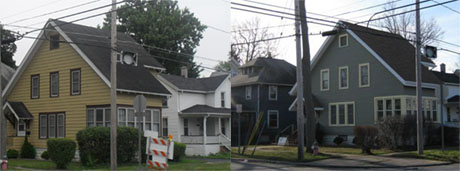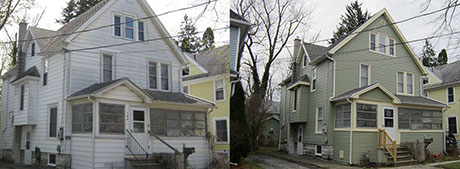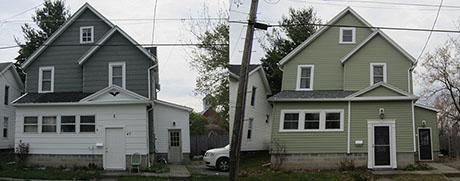Grant aids the rehabilitation of more homes in Batavia

The City has been awarded another grant in the amount of $400,000 for housing rehabilitation projects over the next two years. The Community Development Block Grant is from the NYS Office of Community Renewal.
The first housing rehabilitation grant the City received was in 2010 for the same amount, which led to successfully rehabilitating 19 homes. Major projects completed in many of the homes included roof repair/replacement, porch repair/replacement, heating, plumbing, electrical, masonry work, window and door replacement, siding and rain gutters.
“Nearly all of the rehabilitation work in 2010 was performed by Genesee County contractors, keeping local dollars in the community,” City Manager Jason Molino said.
The program will assist single-family, owner-occupied homeowners to upgrade their properties. Assistance will be provided in the form of grants, up to $24,500, for the cost of home improvements. It is estimated that the program will be able to assist 15-18 homeowners with needed repairs.
“This is another $400,000 that will be invested in City housing stock and contributing towards revitalizing our neighborhoods. This is a great opportunity for our community and I look forward to another successful program,” City Council President Brooks Hawley said.
“This grant is citywide and income-eligible property owners may apply. The city expects to start working with property owners within the next 90 days and would expect the program funding to be committed by the end of the Summer of 2015. Home repairs should be completed within a year of when the funds are committed,” Molino said.
Anyone interested in applying for the grant program should call the Office of the City Manager at (585) 345-6330 and have your name added to the list. Once the office receives the necessary paperwork from NY State, the people on the list will be contacted to fill out applications. Recipients will be chosen from those who meet the necessary criteria and whose earnings have been verified. The income requirements are based on HUD guidelines for Genesee County.
Aside from the 2010 CDBG award, the City also received a $450,000 grant in 2011 from the New York Main Street program to assist 10 Downtown building owners that have invested more than $1.2 million in Downtown buildings, including nine residential units. All three grant awards, 2010, 2011 and 2014, are in line with the City’s Strategic Plan focusing on Neighborhood Revitalization as one of the City’s seven strategic priorities.
Photos showing before and after views of Batavia homes that have received grants provided by the city. From top, 175 Summit St., 164 Ross St., and 47 Hutchins St.


